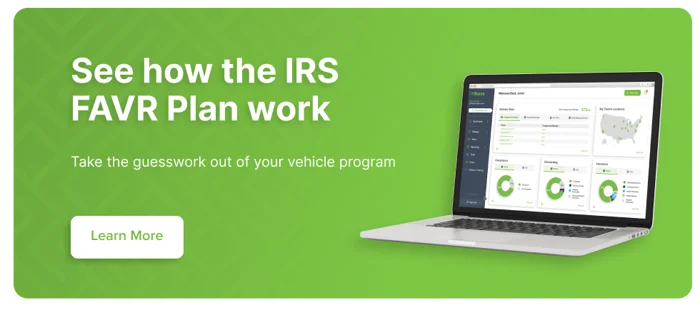A company-provided vehicle has always been a huge perk. However, recent trends have made it more expensive to maintain a company fleet. Is reimbursement of an employee-owned vehicle a better option?
Costs of company vehicle fleets
Organizations that own or lease fleet vehicles face increasing costs. These cost increases derive from a number of forces:
- High prices on new vehicles, with new tariffs driving prices higher
- Rising maintenance and repair costs due to labor cost increases and supply chain problems
- Rapid increases in insurance premiums over the past few years
With these economic forces at work, many organizations must reconsider the price of operating a fleet. Employees enjoy the perk of a company car, but at some point, the cost outweighs the benefit to the company.
Benefits vs. costs of company cars
Operating a company fleet allows for a number of benefits:
- Control over age, image, and branding of vehicles
- High employee retention due to a desirable perk
- Tax deductions on the expense of leasing or owning vehicles
However, the cost of offering a company car can easily range from $1,000 to $1,200 per month:
- Lease ($600) or financing ($800)
- Fuel ($200)
- Insurance ($150)
- Maintenance ($100)
- Taxes and fees ($20)
Do not forget the hidden cost of personal use. The cost of gas and maintenance rises when employees use the vehicle for personal reasons. Operating a personal use chargeback program costs in administrative time.
Benefits vs. costs of mileage reimbursement
One benefit is the flexibility employees have with vehicle choice and vehicle use. But the main benefits of paying a mileage reimbursement are monetary.
- No responsibility for maintenance saves money and admin time
- No paying for gas means no personal use challenges
- Mileage reimbursement at the IRS rate is less expensive and still tax-deductible
An employee who drives 1,200 miles per month will incur a cost of only $840 per month at the current federal rate of 70 cents per mile. Offsetting these savings, however, are a set of non-monetary costs:
- Employees often prefer the perk of a company-provided vehicle
- Less control over age and image, less branding ability
- Unfairness due to over/under-reimbursement of drivers
Liability exposure: company cars vs. employee-owned vehicles
An additional consideration for businesses is liability exposure. There's no question that higher liability comes with providing vehicles to employees. The employer, as the owner or lessee of the vehicle, is held responsible for the actions of its employees while using that vehicle.
However, there are instances in which the same can be true of a driver who receives vehicle reimbursement. By requiring the employee to drive as part of their job, the employer can be legally viewed as entrusting a vehicle to that employee.
Either way, an employer should create a Driver Safety Program that proactively prevents car accidents involving employees. While company-owned vehicles pose a higher level of liability, both models bring risk exposure.
Company car vs. FAVR reimbursement
Rather than paying a simple mileage reimbursement, some organizations opt for a fixed and variable rate model (FAVR). Benefits:
- Provides accurate payments based on the employee's zip code
- Eliminates over-under-reimbursements
- All payments are tax-deductible
- A transparent, individualized rate is attractive to employees
If a company needs to transition some or all of its fleet to employee-owned vehicles, FAVR is the best alternative. The company still loses an attractive recruitment tool and a high degree of control over what employees drive, but it can significantly decrease costs and do so equitably.
Using a transparent data model, a FAVR plan allows each employee to see that their individualized reimbursement is optimized for their vehicle ownership and operation needs.
Liability exposure for FAVR mileage reimbursement
By pairing a FAVR reimbursement program with a Driver Safety Program and an accurate mileage tracking app (both of which are best practices for company car programs), the employer can reduce driver safety liability and mileage discrepancies caused by employees.
The employer can also address liability exposure by enforcing sufficient employee insurance coverage. The organization factors the monthly premium costs into the reimbursement and makes continued reimbursement contingent on the submission of each employee's insurance declarations page every six months.
How to switch from company cars to mileage reimbursements
Ultimately, transitioning from offering vehicles to employees to expecting them to drive their own can be challenging. Eliminating a valued perk is never easy. However, given the current record-high vehicle prices and recent increases in auto insurance for company fleets, it may no longer be financially viable for many employers to continue providing this generous benefit.
If your organization is considering a switch, but would like guidance on how to audit your current plan or how to conduct a switch while retaining employees and their trust, we invite you to read our in-depth "Everything You Need to Know" guide.
Alternately, contact mBurse today to hear from one of our specialists about how much your company could save by switching to FAVR and how to guide your organization through the process of change.

